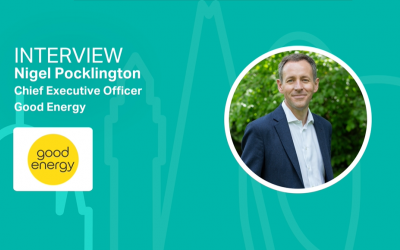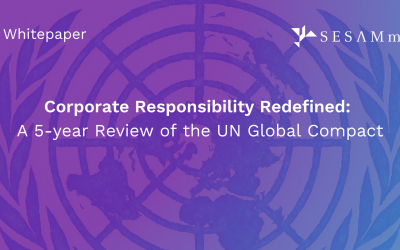Maria João Duarte on the policies needed to accelerate private capital to hydrogen projects
Climate Action caught up with Maria João Duarte, Representative to the EU Institutions, Mitsubishi Power, a part of MHI Group, to discuss the most important policies needed to accelerate the flow of private capital to hydrogen projects.

Climate Action caught up with Maria João Duarte, Representative to the EU Institutions, Mitsubishi Power, a part of MHI Group, to discuss the most important policies needed to accelerate the flow of private capital to hydrogen projects.
What do you think the EU’s hydrogen strategy will achieve? Can it turn Europe into a leader in adopting hydrogen?
The European Commission (EC) published its comprehensive hydrogen strategy in July 2020. Almost all 27 European Union (EU) member states have included plans for clean hydrogen in their National Energy and Climate Plans and at the centre, the EC in Brussels is working on establishing a common regulatory framework and common standards on which to base the whole hydrogen eco-system.
Meanwhile, Europe leads the way with 126 (55%) of 228 hydrogen projects that have been announced worldwide, according to the Hydrogen Insights 2021 report published recently by the Hydrogen Council. These projects cover not only production but the entire value chain, including midstream and downstream and are backed by over EUR100 billion ($120 billion) of announced investments through 2030.
By 2050, the EC estimates that cumulative investments in renewable hydrogen in Europe could rise to EUR180-470 billion, employ 1m people and supply a quarter of the world’s energy.
At a European level, what policies would be most useful in accelerating the flow of private capital to hydrogen projects?
Establishing a hydrogen value chain is a complex undertaking and it will require a complex set of government policy and support mechanisms in order to give confidence to investors. A comprehensive regulatory framework and consistent standards are critical and the EC is working on this, as I have already mentioned.
Not on a European, but global level, we need to agree on basic definitions and certifications, such as what officially constitutes grey, blue and green hydrogen, so that hydrogen can become a globally traded commodity. This will help create demand and, in turn, allow supply to ramp up. All of this will drive down the price of hydrogen – whether the production is powered by renewables or are using carbon capture complementarily, so that investors into different hydrogen production projects can value commercial returns and expanded investments. Of course, public funds will be needed in the early years to stimulate and support private investment.
You touched on the role of carbon capture, so in what contexts will it be most applicable and successful in helping achieve climate targets?
First and foremost, the area in which carbon capture shows most promise in helping Europe reach net zero emissions is in decarbonising heavy industries like steel, cement and chemical manufacturing and long-distance transport.
Beyond that, by combining fossil-fuelled hydrogen production with carbon capture technology, we can ramp up the output of low-carbon or ‘blue’ hydrogen. This will not only reduce emissions per se; it will also help expand the market including for ‘green’ hydrogen. And it is indeed an important element in the EU hydrogen strategy.
Why aren’t more end users committing to use green hydrogen? What are some ways you think the demand side for green hydrogen could be developed?
Like investors, end users need confidence – in this case, the confidence that they will consistently receive a high-quality product and that this product will be a better alternative than continuing to use fossil fuels. After all, major industrial customers will have to commit to offtake agreements that span many years.
It is worth noting here, that unlike solar and wind energy, green hydrogen production is driven by operational costs more than by capital expenditure. Around 80% of the cost depends on electricity prices, so subsidies to bring down the cost of electrolysers will be helpful but may not make green hydrogen production cheap enough.
What we need is an electricity price that is high enough to make renewable power viable yet low enough to make the hydrogen produced from it competitive with gas. In practice, that is a difficult balance to strike.
Separately, but connected of course, is the question of carbon pricing and how to gradually increase the price of CO2 in order to make green hydrogen more competitive, without depriving industry of the profits needed to invest in low-carbon alternatives. Mechanisms like contracts for differences (CFD) can help here.
So can a stage by stage approach, where we build end demand with blue hydrogen while developing the right tools to bring green hydrogen to a competitive stage. These are all issues we are helping EU policymakers to think about so that they can figure out the best approach.
To learn more about hydrogen and other trends, insights, technologies about the Energy Transition, download these free ebooks.






